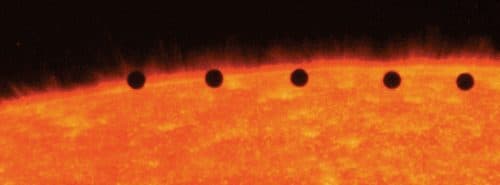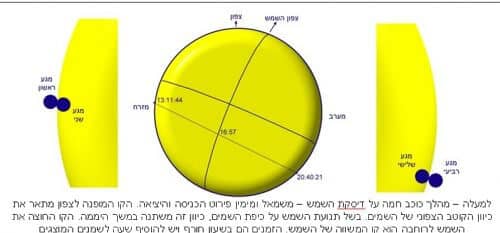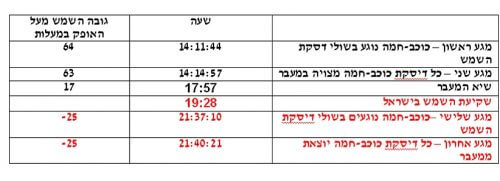Only the first part of the crossing will be visible in Israel tomorrow. The transition will begin at 14:14 and its peak will be at 17:57. Warning: It is forbidden to look at the sun without suitable aids due to the risk of blindness

Dr. Yigal Fat-El, YNET
Warning: First - do not watch the transit in particular and the sun in general without appropriate aids due to the risk of blindness. Later in the article you will find instructions for watching the event and in the sun
Tomorrow (Monday) there will be a transit (transit) of the hot star planet (Mercury) across the sun's disc. The crossing will be visible from Israel only in its first part.
Transits of planets across the sun's disk occur only when the planet is between us and the sun. Therefore, such transitions can only occur for the inner planets, whose orbit is between the orbit of the Earth and the Sun, and these are Hema and Venus.
The transits of a hot star closer to the Sun are more frequent than the transits of Venus which occur at intervals of over a hundred years. Every hundred years there are between 12 and 15 transits of a hot star across the sun's disk compared to 2 pairs of transits of Venus once every 112 years on average with the next pair of transits being in 2117 and 2125.
Transits of a hot star occur when it passes between us and the Sun and is located on the Milky Way (the plane of the Earth's orbit around the Sun) or when it is very close to it. The transits of a hot star across the surface of the Sun apply only in the months of November or May and are sorted by series, where the time period between two successive transits in the same series is 46 years.

The current transit is in transit series number 7, with the previous transit in that series occurring on May 9, 1970 and the next transit not occurring until 2062. The next hot star transit after the current transit will occur on November 11, 2019 (series 6). The next transition will also be visible from Israel only in its first part.
Below is a table with the transit times of a hot star on the solar disk. Since a hot star is a disk of a certain size, the entrance and exit of the passage have two contacts - of the edge of the hot star's disk with the edge of the sun's disk. The period of time that passes from the moment the disk of a hot star starts the transition until the entire disk completes the move is about 3 minutes.

For an observer in Israel, only the first part of the transit will be visible, when the transit ends with the setting sun and a hot star on the western horizon.
Means of viewing the sun and organized observations
As mentioned - do not watch the transit or the sun without special means for viewing the sun due to the risk of blindness,
Since the angular size of a hot star is small, it is impossible to notice the disk without binoculars or a telescope equipped with a special filter to see the transit. For the avoidance of doubt - sunglasses, sooty glass, negatives and the like - are not suitable for direct viewing of the sun!
The observatory in Givatayim will be open to the public from 13:00 in the afternoon and there will be brief explanations about the transition.
If the weather conditions allow, there will be a broadcast of the transition stages as well Detailed explanations and maps on the author's website – Cosmos Telescopes.
More information about the transit of a hot star as well as the observation of the moon and the planets and other astronomical events for 2016 can be found in the astronomical calendar for the skies of Israel.
Dr. Yigal Fat-El, Cosmos Telescopes, Givatayim Observatory, Israel Center for Astronomical Information
